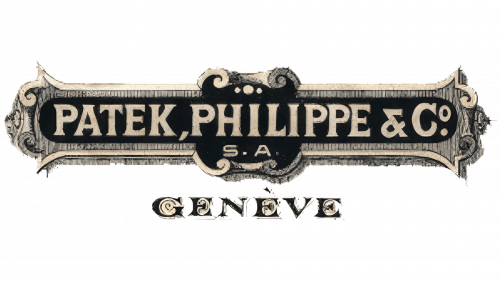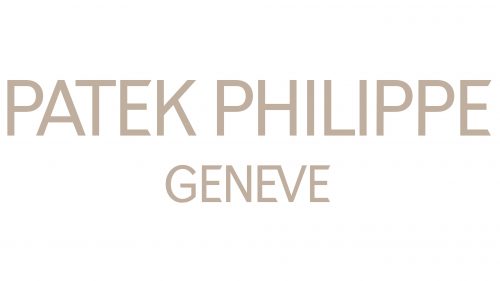The Patek Philippe logo symbolizes the brand’s dedication to precision and refined craftsmanship. It reflects connections to European history and cultural values, upholding traditions that make the brand unique. The elements and colors of the emblem suggest exclusivity and convey the brand’s prestige and status. Every detail creates an impression of sophistication, thoughtfulness, and artistry, emphasizing its long history and commitment to the ideals of elegance and grandeur in watchmaking.
Patek Philippe: Brand overview
The history of Patek Philippe began in 1839 when Polish émigrés Antoni Patek and Franciszek Czapek founded Patek, Czapek & Cie in Geneva, Switzerland. Both were skilled watchmakers who had fled Poland after a failed uprising against Russian rule.
Initially, the company focused on producing high-quality pocket watches. Patek and Czapek quickly earned a reputation for creating exceptionally accurate and beautifully designed timepieces. Their work stood out for both its technical precision and artistic craftsmanship.
A key moment in the company’s history occurred in 1844 when Antoni Patek met French watchmaker Adrien Philippe at a Paris exposition. Philippe introduced his groundbreaking invention: a keyless winding mechanism that allowed the user to wind the watch and set the time using a crown, eliminating the need for a separate key. This innovation revolutionized watchmaking.
In 1845, the partnership between Patek and Czapek ended, and Czapek left the company. Adrien Philippe joined as Patek’s new partner, and the company was renamed Patek Philippe & Cie in 1851.
Under Patek and Philippe’s leadership, the business expanded rapidly. They produced watches with both advanced technical features and distinctive designs. At the World Exhibition in London in 1851, the brand’s watches caught the attention of Queen Victoria, marking the beginning of a long tradition of creating timepieces for royalty and nobility.
In 1868, the company made the first Swiss wristwatch for the Hungarian Countess Kosovich, a significant innovation since wristwatches were previously considered primarily decorative accessories for women.
The 1880s were a period of major technological progress. The brand received a patent for its first-minute repeater in 1889, and another for a perpetual calendar for pocket watches in 1881.
After the founders’ deaths, their sons, Joseph Antoine Benoit Patek and Emile Philippe, took over the company, continuing the tradition of innovation and excellence.
In 1902, the company was granted a patent for a double chronograph, and in 1925, it created the first wristwatch with a perpetual calendar.
The Stern family took ownership of the company in 1932, during the difficult years of the Great Depression. Jean and Charles Stern, who had been supplying dials to the company, took control and continue to own it today.
Under the Stern family’s leadership, the brand continued its legacy of innovation. In 1941, they introduced the Reference 1518, the world’s first mass-produced watch with a perpetual calendar and chronograph.
Further advancements occurred in the 1950s and 1960s. In 1956, the company produced the first electronic clock without moving parts. In 1962, it set an unbeaten precision record at the Geneva Observatory.
One of the company’s most iconic models, the Nautilus, was launched in 1976. Designed by the renowned Gerald Genta, this steel watch became a symbol of luxury watch design and remains one of the brand’s most recognizable creations.
In 1989, to celebrate its 150th anniversary, the company introduced the Calibre 89, the world’s most complicated mechanical watch, featuring 33 complications.
The brand continued to innovate in the 1990s and 2000s. In 1996, it introduced the Annual Calendar, the first watch with this feature, and in 2001, it debuted its first tourbillon wristwatch movement.
2009, the company consolidated its production operations in a new state-of-the-art facility in Plaine-les-Ouates. This allowed for improved quality control and further enhancement of its production of intricate timepieces.
In 2014, to celebrate its 175th anniversary, the brand introduced the Grandmaster Chime, its most complicated watch, featuring 20 complications.
As of 2023, the company remains one of the world’s most respected and prestigious watchmakers. Under the continued ownership of the Stern family, it remains independent, blending modern technology with traditional craftsmanship.
The brand’s history marks a relentless pursuit of watchmaking excellence. From its earliest pocket watches to the most complex wristwatches, it has consistently been at the forefront of the industry, creating functional timepieces and works of art that are treasured as heirlooms passed down through generations.
Meaning and History
What is Patek Philippe?
This Swiss brand represents the best in watchmaking, craftsmanship, and exclusivity. This family business combines traditional artisanal techniques with advanced technologies, producing some of the most coveted watches in the world. The brand is known for its complex models that feature multiple complications, such as clocks, minute repeaters, and perpetual calendars. Due to limited production and high demand, some models have multi-year waiting lists. Both historical and modern watches from this brand often sell for record amounts at auctions, making them even more appealing to collectors and connoisseurs.
1887 – 1920s
The brand’s first logo is based on a decorative form, resembling a carved scroll of parchment or a piece of fabric. The image’s twisted edges connect to ancient knowledge and traditions. The flourishes and dot decorations reference the times of nobility and royal courts. The company aims to position itself as a connoisseur, carefully preserving the secrets of the past and emphasizing the brand’s rich history, founded in the early 19th century.
The flourishes in the logo symbolize elegance, which is highly valued at royal courts. This decision is no coincidence: in 1951, the Queen of Great Britain purchased the brand’s watches, and the early design featured gemstone inlay. The company’s products have always been aimed at the elite and wealthy.
The company name is written in large capital letters in the center on a black oval background. Initially, Antoni Patek and Franciszek Czapek owned Patek, Czapek & Cie. The logo, which began to be used after Adrien Philippe and Antoni Patek’s union in 1951, highlights the brand’s great importance. The capital letters draw attention to the elite audience and innovations such as the first keyless winding watches.
Below the main element is an inscription indicating the capital of Switzerland, the city where the company was founded. This detail symbolizes the high quality of the products, as Swiss watches have long been associated with precision and excellence in watchmaking.
1920s – 1996
The new logo is crafted in a more refined and sophisticated manner. At the top is the Calatrava Cross, a symbol of knighthood, nobility, and tradition. Patek Philippe chose this cross to emphasize the brand’s commitment to high standards of craftsmanship and quality. The cross-shaped symbol also resembles an element of an old watch mechanism that regulates the spring.
Interestingly, the Calatrava Order has historical ties to the Cistercian Order and was under the jurisdiction of a French abbey, which can be linked to the French roots of Adrien Philippe, one of the company’s founders.
The inscription on the logo is made in large yet light characters. The simplicity and clarity of the lines highlight the prestige and precision of the brand’s products. At the same time, the size of the letters symbolizes the high quality and ease of use of Patek Philippe watches.
All additional details have been removed, and the comma between the founders’ last names is no longer present, making the inscription more unified. This symbolizes the brand’s transition to a new phase, as the company’s management passed into the hands of the Stern family.
1996 – today
The Patek Philippe logo stands out due to the use of white gold letters, which emphasizes the high status and exclusivity of the products. This choice of material symbolizes the prestige and luxury of the brand, which is entirely justified considering that nine out of the ten most expensive watches sold at auctions are by Patek Philippe.
Philippe Stern, who led the company and gave new momentum to its development, significantly influenced the redesign of the emblem. In his effort to highlight the brand’s importance and heritage, Stern launched a magazine dedicated entirely to Patek Philippe watches in 1996. This move became an important part of strengthening the company’s image, helping the brand maintain its reputation as a leader in luxury watches and further solidifying its position in the global market.







